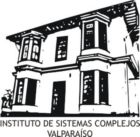BIC 2007
2nd ISCV Thematic Workshop: Biologically-Inspired Computing
December 3-7, 2007 — Valparaíso Complex Systems Institute, Chile.

Expositors
International
- Gabriela Barrantes, Universidad de Costa Rica, Costa Rica, and Santa Fe Institute, USA.
- Ron Goldman, Sun Microsystems, USA.
- Fernando Sancho, Universidad de Sevilla, Spain.
- Guy Theraulaz, Université Paul Sabatier, Toulouse, France
- Chris Wood, Santa Fe Institute, USA.
National
- Hector Allende, Universidad Técnica Federico Santa María, Valparaíso.
- John Atkinson, Universidad de Concepción.
- Juan Carlos Letelier, Universidad de Chile.
- Pablo Marquet, Pontificia Universidad Católica.
- Jorge Mpodozis, Universidad de Chile.
- Carlos Rodriguez, Pontificia Universidad Católica.
- Javier Ruiz del Solar, Universidad de Chile.
- Jorge Soto-Andrade, Universidad de Chile.
Gabriela Barrantes, Universidad de Costa Rica, San Pedro, Costa Rica
Gabriela Barrantes graduated from Universidad de Costa Rica (UCR) in 1990. During the next four years she worked in the industry, with occasional experiences as a teacher. She starts teaching full-time in 1994, and at the same times she starts a Master in Software Engineering at the Florida Atlantic University, from which she graduates in 1995. After a time of teaching and research at UCR, she decides to run for a PhD at the University of New Mexico (UNM), with the help of a Fullbright-LASPAU scholarship. At the UNM she works with Stephanie Forreston the application of biological metaphors to computer security, especifically on improving the resilience of systems to attack propagation through the introduction of artificial diversity. After obtaining a PhD in 2005 she goes back to the UCR, where she continues researching on diversity, with the help of the Santa Fe Institute, and she also makes incursions in other fields such as electronic voting.
Ron Goldman, Sun Microsystems Labs, USA
Ron Goldman is a researcher working at Sun Microsystems Laboratories on alternative software development methodologies and new software architectures. His OOPSLA 2006 paper “Conscientious Software” (co-authored with Richard P. Gabriel) explored ways to make software more robust—drawing on ideas from Biology and Complexity Science.
Ron is currently a member of the Sun SPOT’s project that is investigating the use of Java on small embedded, wireless devices. He was instrumental in defining the vision and details for the java.net website and helped start the Javapedia project. He has advised many Sun open source projects including OpenSolaris, NetBeans, OpenOffice, and Jini. He is the co-author of the book “Innovation Happens Elsewhere: Open Source as Business Strategy” published in April 2005 by Morgan Kaufmann.
Prior to Sun, he developed a program to generate and manipulate visual representations of complex data for use by social scientists as part of a collaboration between NYNEX Science & Technology and the Institute for Research on Learning. He has a continuing interest in the design of programming languages and has developed various programming environments (IDEs). He has a PhD in computer science from Stanford University where he was a member of the robotics group.
Fernando Sancho, Universidad de Sevilla, Spain
Fernando Sancho is a member of the Research Group on Natural Computing at the University of Seville and professor of the Dpt. of Computer Science and Artificial Intelligence at the same university.
His Ph.D. and post-doc works focused on the study of non-conventional computing models, mainly molecular computation and cellular computing with membranes (a model inspired in the living cells), enjoying a post-doc position at the Biocomputing Group of Lila Kari (University of Western Ontario, Canada).
Also, he is researcher in the Transatlantic Baroque Project, a big interdisciplinary project with researchers from Latin America, Europe, USA and Canada exploring the emergence, development, and breaking of the Transatlantic Baroque. Now, he is supervising the “Grupo de Estudio de Sistemas Complejos”, a group trying to join the spirit of cellular computing with the field of applications of complex systems.
Guy Theraulaz, Université Paul Sabatier, Toulouse, France
Guy Theraulaz, a senior research fellow of the Centre National de la Recherche Scientifique (CNRS) in France, is based at the Research Center on Animal Cognition, Université Paul Sabatier in Toulouse, where he heads the Swarm Intelligence group. For many years, he has been a pioneer in the field of swarm intelligence, primarily studying social insects but also on distributed algorithms, e.g. for collective robotics, directly inspired by nature. His research focuses on the understanding of a broad spectrum of fascinating collective behaviors by studying, quantifying and then modeling the individual level behaviors and interactions, thereby elucidating the mechanisms generating the emergent, group-level properties.
Chris Wood, Vice President, Santa Fe Institute, USA
Chris received his Ph.D. from Yale University in 1973. Following a postdoctoral appointment at Walter Reed Army Institute of Research in Washington DC, he returned to Yale as a faculty member with joint appointments in the Departments of Psychology, Neurology, and Neurosurgery. Chris left Yale in 1989 to lead the Biophysics Group at Los Alamos National Laboratory, a position he held until becoming the Santa Fe Institute’s Vice President in 2005. At Los Alamos, Chris’ group was responsible for a wide range of biophysical and physical research, including protein crystallography, quantum information, and human brain imaging. During 2000-2001, Chris served as interim director of the National Foundation for Functional Brain Imaging, a collaboration involving Harvard / Massachusetts General Hospital, University of Minnesota, and a number of academic and research institutions in New Mexico devoted to the development and application of advanced functional imaging techniques to mental disorders. Chris’ research interests include imaging and modeling the human brain, computational neuroscience, and biological computation.





